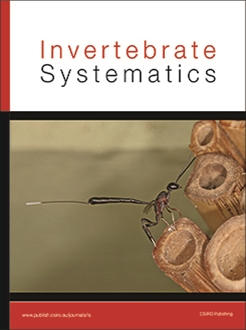The vestimentiferan tubeworm genera Lamellibrachia and Escarpia inhabit deep-sea chemosynthesis-based ecosystems, such as seeps, hydrothermal vents and organic falls, and have wide distributions across the Pacific, Atlantic and Indian Oceans. In 2010–2012 during initial explorations of hydrothermal vents of the Mid-Cayman Spreading Centre (MCSC), both genera were found to co-occur at the Von Damm Vent Field (VDVF), a site characterised by diffuse flow, therefore resembling a ‘hydrothermal seep’. Here, we erect two new vestimentiferan tubeworm species from the VDVF, Lamellibrachia judigobini sp. nov. and Escarpia tritentaculata sp. nov. Lamellibrachia judigobini sp. nov. differs genetically and morphologically from other Lamellibrachia species, and has a range that extends across the Gulf of Mexico, MCSC, off Trinidad and Tobago, and Barbados, and also across both vents and seeps and 964–3304-m water depth. Escarpia tritentaculata sp. nov. is distinguished from other Escarpia species primarily based on morphology and is known only from vents of the MCSC at 2300-m depth. This study highlights the incredible habitat flexibility of a single Lamellibrachia species and the genus Escarpia, and historic biogeographic connections to the eastern Pacific for L. judigobini sp. nov. and the eastern Atlantic for E. tritentaculata sp. nov.
ZooBank: urn:lsid:zoobank.org:pub:D9F72BD4-FDE1-4C0A-B84B-A08D06F2A981






